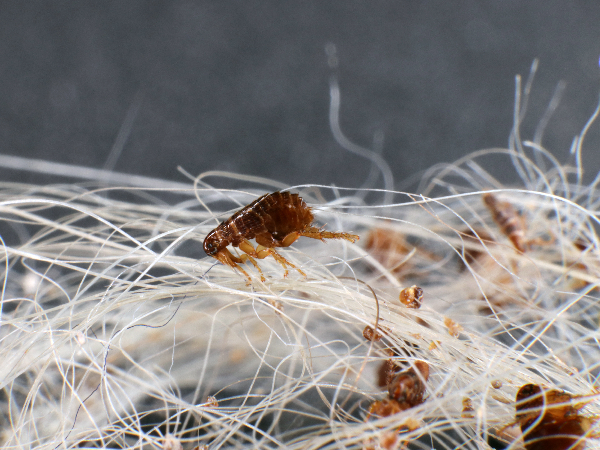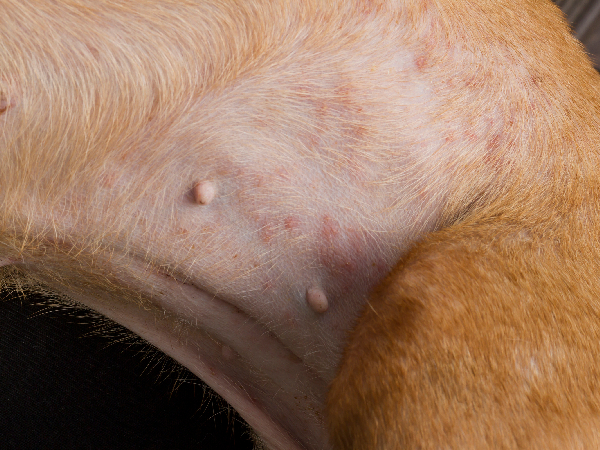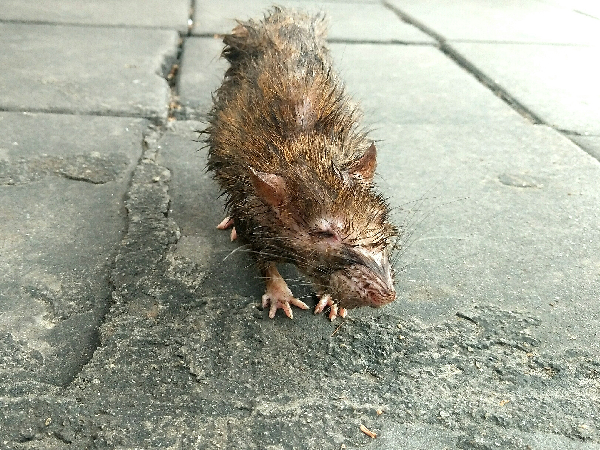Surprising Facts About Fleas in Cats and Dogs
Fleas are common parasites that nestle into your dog's skin and feed on their blood by biting through the skin. If a flea gets onto your dog, you could soon have an infestation in your home. Thankfully, there are many ways to protect your dog from fleas.
But what are some other, perhaps less known, facts about these jumping, biting parasites? Let's take a look.
1. Fleas live everywhere
Fleas are found on every single continent, even Antarctica. Most Antarctic fleas are found on birds, including penguins. Because the environment is so extreme and inhospitable, most fleas will have to stay on their host for their entire life cycle, unlike fleas in the UK which are quite happy to slumber in your couch or dog bed until conditions are perfect for hatching.
2. Fleas are fantastic athletes.
Fleas can jump more than 100 times their own length. This is around seven inches vertically and horizontally over a foot (13 inches). They’re particularly good at moving from host to host, which is why all animals in a house should have flea treatments. If humans were as good at jumping as fleas, they could jump 250 feet into the sky and travel 450 feet in a single bound.

Read more: How to check your dog for fleas and ticks
3. Fleas have lots of children very quickly.
Fleas can invade your home incredibly quickly. That's because a single female flea can lay around 40 to 50 eggs a day. That works out to be about 2000 eggs in their short lifetime. These flea larvae burrow deep into your sofas, carpets, and pet's bedding. They can lie dormant for months until the conditions are right for them to emerge as hungry fleas ready to latch onto your pets.
4. Fleas are survival experts.
While fleas prefer warmer weather — spring and summer are their favourite times of the year — they will survive in cool temperatures, burrowing into fabric and waiting for the best time to come to the surface and start looking for food
5. Fleas need blood to reproduce.
Although fleas can go up to two months without blood, they can't start reproducing without it. Unfortunately, once a flea has its first meal, it will begin laying eggs within 36 to 48 hours. So by the time you've spotted a flea on your pet or home, they've likely already laid their eggs.

Read more: Fleas and dogs: how to keep your dog safe and itch-free
6. Fleas only look like fleas under a microscope.
Because fleas are so tiny, about 1/12 of an inch, they can't really be seen with the naked eye. So what you'll see instead is flea dirt. Instead, imagine a sprinkling of dark powder – almost like pepper. In some cases, flea dirt may be hard to tell apart from regular dirt, but there is a way. Wet a paper towel and press it against the affected fur or dirt. If you spot red (blood stains) on the wet paper, you can be sure it's flea dirt.
7. The flea life cycle happens in four stages.
The flea life cycle involves four stages: eggs, larvae, pupae, and adults. The pupa is a cocoon where the fleas turn into adults, hatching when the conditions are right. It is then that they start to become an issue for your pet and your home.
8. Fleas once killed millions of people.
In October 1347, a ship that had embarked from Asia docked in Sicily. Unfortunately for Europe, this ship was carrying rats whose fleas were the cause of what is known as the Black Death, the bubonic plague. This plague killed over 40% of the population of Europe in just over five years.

Read more: How to apply flea treatment to your dog
9. Flea treatment can keep your pet safe
Routine flea treatments are the most effective way to protect your pet and prevent fleas from infesting your home. Consult your vet to determine the most suitable preventative flea treatment for your pet, which may include collars, spot-on solutions, or tablets. Depending on the type of treatment, you will need to administer it to your pet either monthly or quarterly. It’s worth noting that members of preventative healthcare plans, such as Pet Health Club™, receive regular flea treatments as part of their membership.
A big flea study
A 2018 study conducted by MSD revealed some rather shocking statistics about fleas and the negative impact they can have on our pets.
The findings
The study revealed that:
- 1 in 4 cats and 1 in 7 dogs sampled were found to be carrying fleas.
- Working with vets across the UK, the study checked more than 1,470 cats and dogs for fleas and found that 323 pets were carrying them – that’s more than 20%!
- 79% of Brits didn’t know that fleas can lead to diseases like Bartonellosis, which can be transmitted to people.
- 11% of the fleas sampled were carriers of Bartonella, an infectious bacterium that can cause disease.
- 57% of the UK population don’t understand the lifecycle of a flea, or the meaning of repeated flea infestations in the home.
The study was supported by a previous survey in which 82% of British pet owners said they struggled to keep their pets’ fleas under control.
What to do?
As a responsible pet owner, you should take both the threat of fleas and your pet’s treatment seriously. 1 in 4 cats and 1 in 7 dogs. If they’re unprotected, what’s to say it’s not your pet, or that your pet couldn’t pick up fleas tomorrow?

Need more info?
For more information about keeping your pet safe from fleas, have a chat with your local vet.
Find your nearest vet using our Find a Vet page, or speak to a vet online using Online Vets.



